HMS Shoreham has returned to Scotland.
The Royal Navy say that the Sandown Class Mine Counter Measures Vessel left Scottish shores in 2018, making the 6,000-mile journey to the Gulf, where she was part of the UK’s enduring presence in the region along with fellow Royal Navy minehunter HMS Brocklesby.
“While deployed, Shoreham helped keep important sea-lanes secure, ready to detect and neutralise underwater devices should anyone threaten the safe passage of merchant shipping.
While the ships stay in the region, the crews rotate, with the current ship’s company – Crew Five from MCM1 – having spent eleven-months deployed on operations in the last 15-months. The Crew also had the task of sailing the 600-tonne ship home.”
The journey back home saw the crew conduct maritime security operations in over seven different seas and four vital maritime “choke points”, deterring both piracy and terrorism. Both HMS Shoreham and HMS Brocklesby also participated in Operation Sea Guardian, NATO’s maritime security mission in the Mediterranean.
“I am incredibly proud of my ship’s company for the hard work and effort they have put into making this trip home a success,” said Lieutenant Commander Richard Kemp, Commanding Officer of HMS Shoreham.
“They have shown a fantastic ethos, especially during some challenging periods at sea. I now look forward to granting my ship’s company some well-deserved post-deployment leave before we continue operations in the UK.”


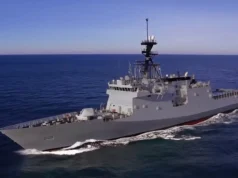
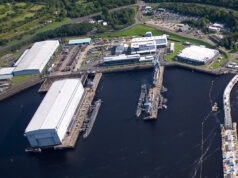
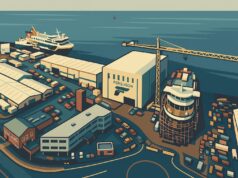
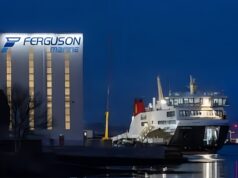
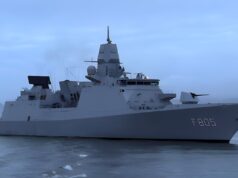
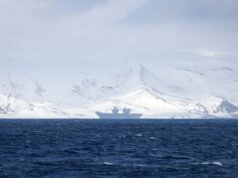
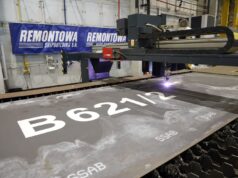
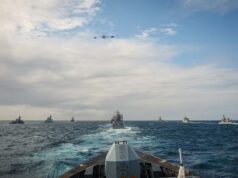



What happens to her now?
Gifted to Ukraine?
Welcome home!
As these two classes of MCM vessels are being taking out of service I wonder if a few of them could be used by a University or a new Ocean research group for research and polution controls in coastal seas. They might be even useful in controling infrastucture such as undersea cables/pipelines etc. Only an idea.
As for HMS Shoreham and Brocklesby, good job and welcome home. Of to new pastures soon.
replace gun with High pressure waer cannon and transfer to Fisheries, they can patrol Channel islands
You beat me to it Steve. They would be perfect for the job. I’d leave the gun and add the water cannon. They could also be used to sink inflatables used by illegal economic migrants.
George you’ve got my Vote for the latter of your 2nd suggestion Out Sweeps that should catch some Props, better still if Swedish Mk 9 cutters were also fitted
With a top speed of 14 knots and poor endurance they’d be pretty useless as patrol ships. No to mention no sea boats to speak of and to big (and fragile) to effectively board and inspect vessels themselves, they wouldn’t be worth the upkeep.
The Type 32 has been touted as a means to increase the escort fleet to 24 but if they are the sole replacements for the mine-hunter fleet then it’s yet another net cut in numbers!
With the batch 1 River’s and Echo’s getting long in the tooth by 2030 i’ve long thought we should at that point bring the batch 2 River’s back to the UK and replace both the former vessels and the Hunt’s/Sandown’s with 8-12 2-3,000 ton hulls that have a basic patrol/presence fit and the space/configuration to deploy containerized mine-warfare or survey equipment.
Type 31/32’s (with a slightly better weapons fit than planned) as the teeth in The Persian Gulf or Malacca Straits with these multi-role support ships providing a bit of depth alongside them or filling the lower threat constabulary roles in The West Indies or Med.
We just can’t afford that. Per tonne, I believe minehunters are the navy’s most expensive vessels. I’m happy with the T32s if they get done properly, and internationally our allies will value a frigate with a bunch of autonomous MCMVs more than 4 or 5 manned MCMVs. If we see another budget increase, which is possible in the worlds current climate, I would begin with arming the ships we have better, then increasing sub numbers, whether through AIP or more nuclear, probably the former.
Eclipse, Hms Wilton was the Navy’s first foray into GRP constructed MW ship or as it was Hms see through, very affective for a low Magnetic signature, Expensive but a point had been proven When the First Hunt class Hms Brecon was Commissioned she was at the time the largest GRP boat built so construction was lengthy, it had to be strong but light in structure first with bow thrusters everything had too be made to keep the Ships Mag signature as low as possible costly their were but Damn good at what they were built for .The use of Frigates as MCM vessals how would they be able too have a low Mag Sig being made of Steel and relying on remote vehicles you’ll have to get it right every time
You have to get it right everytime hunting anyway.
The Hunts haven’t done sweeping for decades. That capability was removed and they became pure sonar equipped hunters but lacking in the deep water VDS that the Sandowns have.
The remote boats can do the hunting and sweeping from tens of miles away so a steel ship isn’t going to be an issue. The sweep will be surface influence only. No otters, kites, jumbo floats, TAGs or wires with cutters. Any bouant mines will be cut using the Saab multi shot ROV
You still need good intelligence on where a field may be deployed and you will still need bubbleheads to gain intelligence on anything that is found. Airborne sensors will be used as well to look down which is something a current MCM cannot do. We where using the Demon Camera system with filters back in the late 80s in Lynx. Lynx flew ahead of your Nov track and the camera with certain filters applied could see down 30+meters for any mine like objects. No doubt things have moved on since then
Yes Gunbuster, all good on paper we seem too be putting all our eggs in 1 basket depletion of manpower seems too be the Core issue , if we can advance so rapidly in remote Assets then future adversaries would be looking into Counter measures Frequency
distrupters Electromagnetic Spectrum
jammers Cheap options that can render expensive pieces of equipment usless .I wonder if whilst MOD watched trails with this equipment before procurement questions had been raised over whether they could by disrupted ,Just hope that ,the MOD is not getting Seen off like Those countries that purchased those bomb detectors which turned out too be GolfBall finders Fingers crossed for this brve new world
Eclipse, in many ways we can afford 8-12 2-3,000 ton mother ships, it just depends on how we do it. At the moment the government is looking at the possibility of a T32, at the same time looking at a MRSS and a LSS plus a mother ship for unmanned MCM, ROVs etc.
So lets look at what other nations are doing, I did mention Belgium Holland in my first post. They are building with the French a 2,400-2,800 ton mothership at the cost of about £100 million each. They have bays for unmanned surface vessels, ROVs, automated underwater detection units, mine countermeasure units etc.
However if we wish to combine capability and reduce cost then look at the Damen Crossover type vessels they could operate as a frigate with 120 RMs, act as a MRSS or LSS with 200 RMs or a well defended independent command with RM and unmanned MCM ability. If we build 18-20 of these we would have 5 T32s (government spoke about it), 6 MRSS ( again mentioned by government), 3 LSS (also mentioned) and 4-8 motherships (motherships mentioned but no numbers) all with the ability to act as a part of the fleet, all capable of defence and attack, all capable to land RM, several capable to act as replenishment ships and most capable to act as motherships. With such a large production run we could reduce the cost to about £300 million each. Yes I know that seems more expensive than the £100 million of the Belgian Dutch mothership but I have taken into account basic weapons equipment outfit and a full frigate version. With one small alteration to the Damen design which would be in steel we could have an extra 20 combat ships for the fleet able to deploy TAS, 1500 RMs, Unmanned MCM units, helicopters, anti air and anti ship missiles and anything from a 40mm to a 5inch gun. Cost to the goverment to double the combat stregth of the RN £6 billion minus tax returns £3 billion real cost, over the life time of the ships operational cost and replacement cost minus tax returns from work carried out, RN pay, VAT etc £20 billion not fuel, damage, upgrades etc. This equates to £2 million per day if all 20 ships are at sea 365 days of the year for 25 years.
Expensive not really, how much did we waste on track and trace, £36 billion! How many people would be needed to build these ships over a ten year period, RR for engines, steel, radar, weapons, UAVs, ROVs, fittings, water systems etc. Give a contract like that to Newcastle or Liverpool and it will create work, training apprenticeships etc. Make the regulation that 75% must be UK built then all the sub-contractors will need more people. We might then need to take 4-6000 people from the unemployed line. That could be an avarage saving of about £100 million per year (taking into account unemployment benifit, housing benifit, council tax etc), three years saving is one ship. Then think of the knock on effects, shops have more trade, pubs have more trade, some will buy houses so more building is needed. All of this means that the non direct industries in the area will need more people, again reducing unemployment.
So if I take the old system of for every front line person you need three support people then that could mean in the shop,building trades, pubs etc you would need to employ 12-18000 from the unemployed. A further saving of £300 million per year.
Can we dispense with the throwaway comment. “We cannot afford that.” The first duty of government is national defence and that includes our global interests. Post BREXIT Great Britain, simply cannot afford to have a numerically inadequate Royal Navy. We could easily justify doubling the fleet in every area other than carriers. We give away enough money to achieve that target and greatly expand the other services too.
Just noting that in the replies above, nobody is taking into account what the capabilities of the unmanned MCMVs are. I’m all for increased hull numbers too, but if a small boat can do route survey then so be it. This represents a massive cost savings. Personally I would like to see a mix of smaller (ship based) and larger (shore based) unmanned vehicles along with about 7 Venari minehunter motherships for where presence and quick reaction are needed.
Ron I take it that for Route surveys such as OP Pike a small boat could do this task would this be manned or Remote unmanned was just wondering if orderance was too be found which happens especially after storms have passed through R.S quadrants would it be dealt with straight away or marked and left ?
People are fixated on numbers, rather than capability. And what affect these platforms bring to the fight.
Not being in the navy, could someone please explain to me how the tour of duty works for the crews? The article states that the crew have been deployed for 11 of the last 15 months… what does that actually mean in real life? how long would a crew be expected to be based in the gulf/deployed before being allowed to fly back to the Uk to be with family for a break/downtime…. Long deployments was the reason I never joined the navy, I just didn’t think the work/life balance was right.
Andrew ,I’m Ex Navy ,when I Joined up did my training and After 6mnts Got my first Sea draft, which was from between 24mnths to 30mntgs, deployments were around 4 too 6 months there was no crew changes if your time was up ,you’d be Drafted off 1 for 1 didn’t getting half deployments and full crew changes or R&R not until the Mid 80ts did we shut ship and take 2 weeks leave when deployed if we were in a squadron of 3 boats Now days Sweepers rotate their crews on a regular basis Crew for Crew
Thanks….
The ships, MCMV, T23 and the FSU are deployed out to the ME. The crews rotate back to the UK every 4 to 6 months. The crew swaps are tied in where possible to School holiday periods for obvious reasons. There is a set handover period where the new and old crew handover equipment, paperwork, defects etc. Its known as a RIP. After the handover there is a period of work up usually supervise by a UK training team that come out especially and then that’s it… You do your stuff until the next RIP out.
The current T23 crew rotation system in use on Montrose evolved from the previous 9 month deployments that where trialled. For that a maintenance break happened mid deployment and you flew 50% of the crew home for 2weeks, on their return the other 50% went back. The maint was done by local shipyard staff (Me!!) and UK contractors covering specialist kit.
It worked but the crew was at the mercy of RAF aircraft availability and once you had done traveling you got maybe 10 days at home. Personally my wife and I agreed that had I still been serving, I wouldn’t have done that. When I was away I was away. Coming back for 10days in the middle would have just screwed up her routines with the kids and upset the kids as well having to say goodbye twice.
Thanks….
sounds like a tough deployment if your married or family orientated…
That was the only problem married crew did get what was called Seperation pay , There was also Good back up! back at your home base in Personel welfare services which would if possible get Crew members back if things such as Berievments and births were tòo happen whilst deployed exceptions to this happened in 82 (Falklands) But that’s what we signed the dotted line for
Welcome back home .
Had her on the slipway at work for a time during her stint in the ME. She needed a new underwater paint scheme applying and a bit of GRP work to a delammed beam. We also did a few other work items as well because the opportunity to be out of the water doesn’t come that often. Things like servicing sea valves, polish the propulsor and bow thruster blades. I think we also did a propulsor oil change as well.